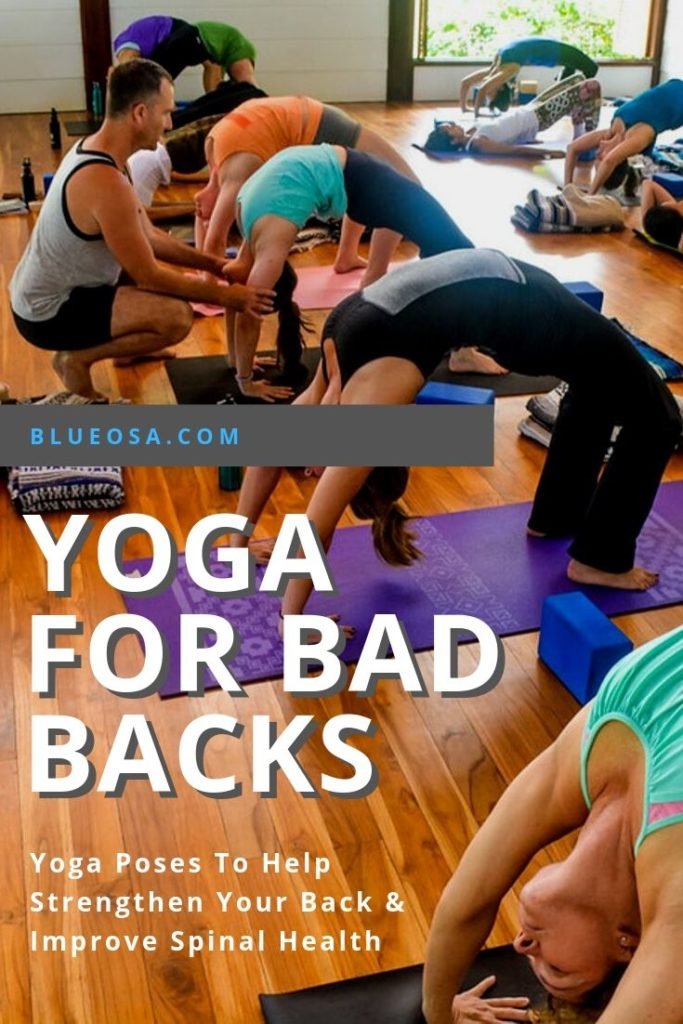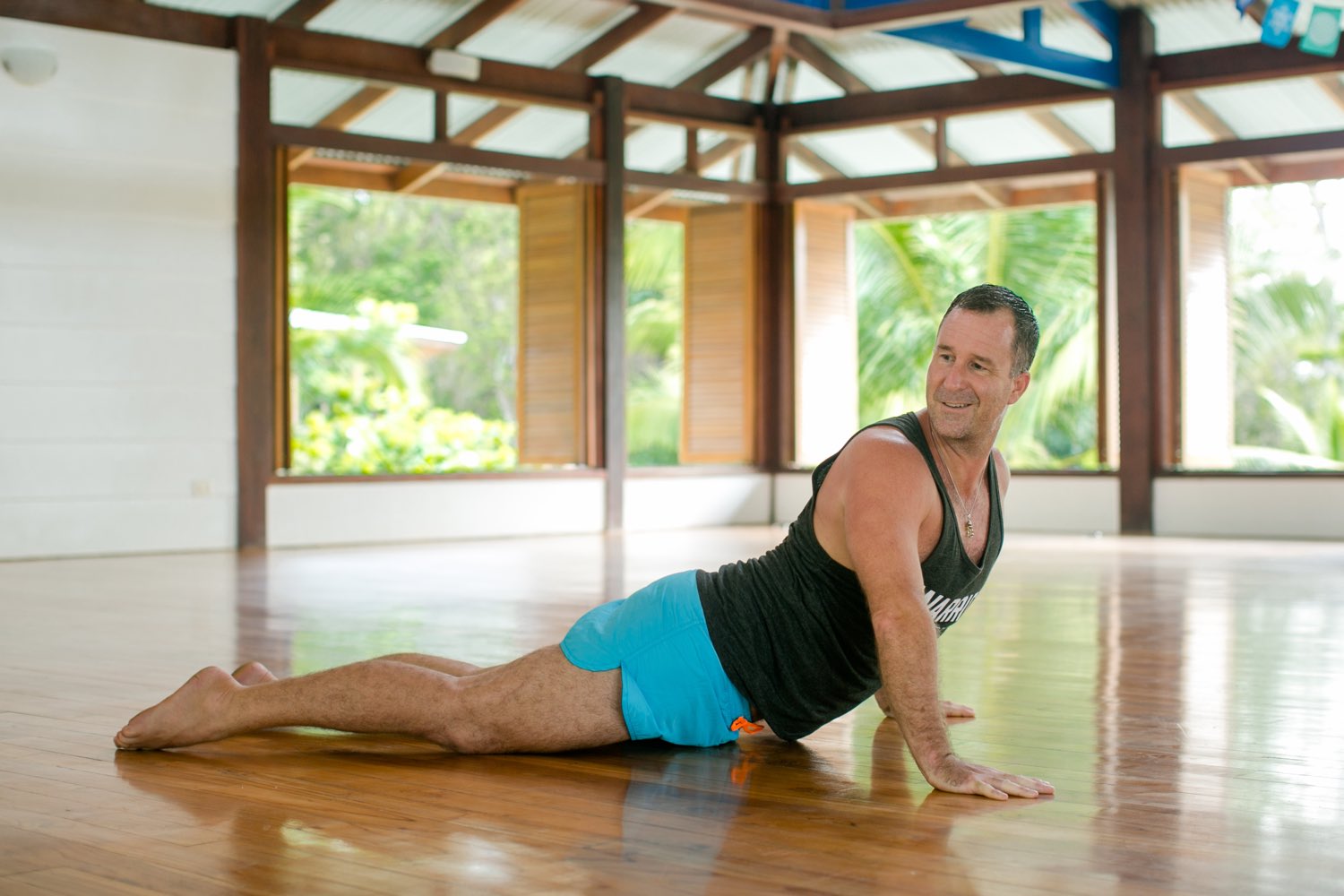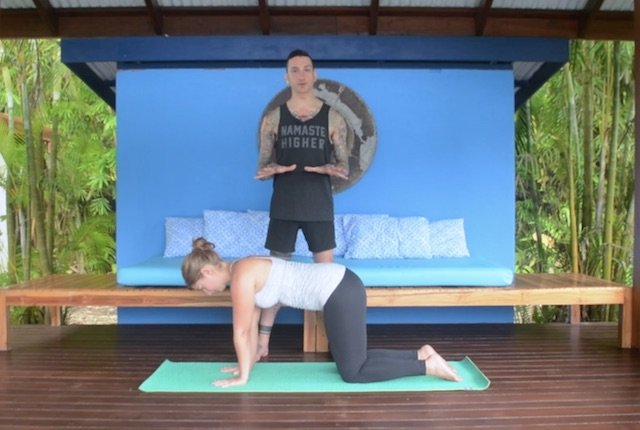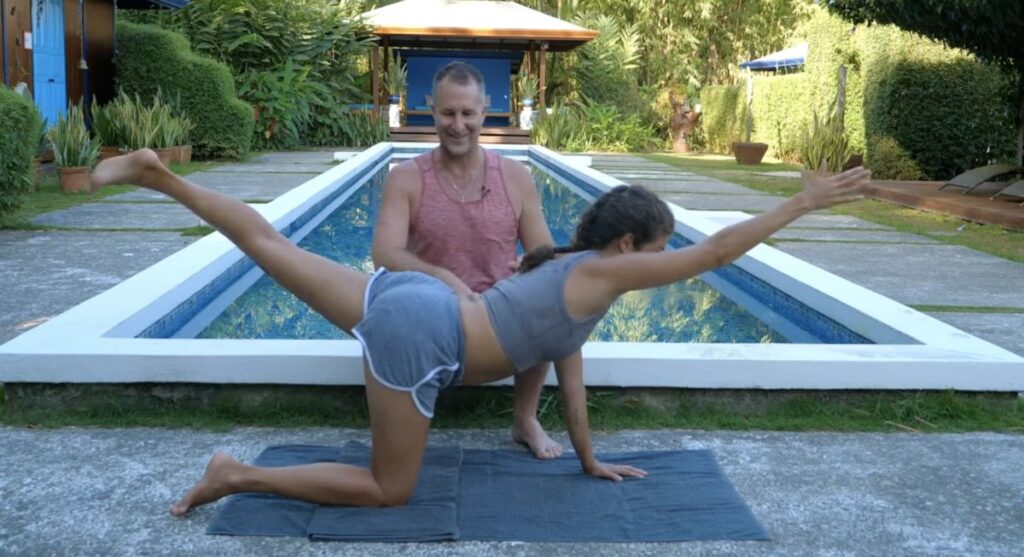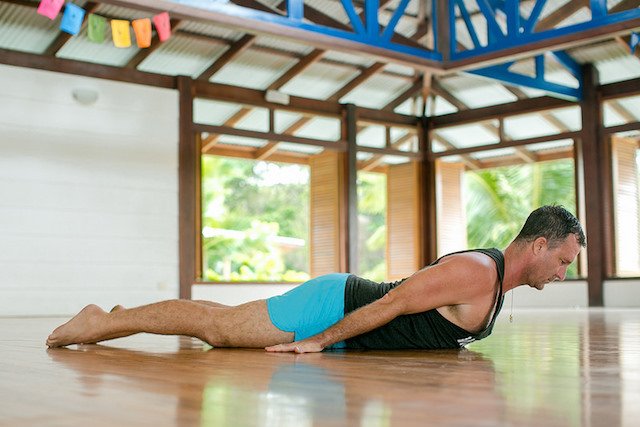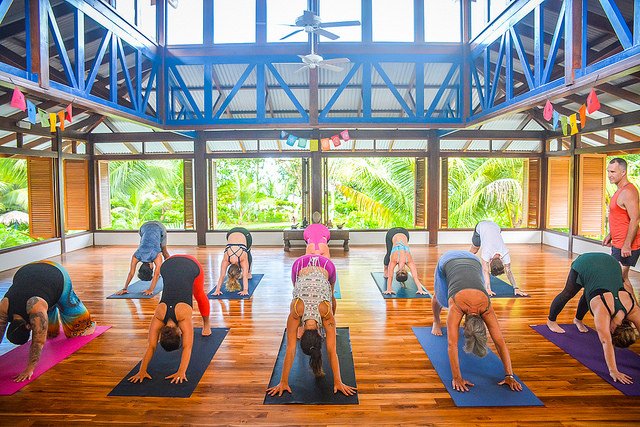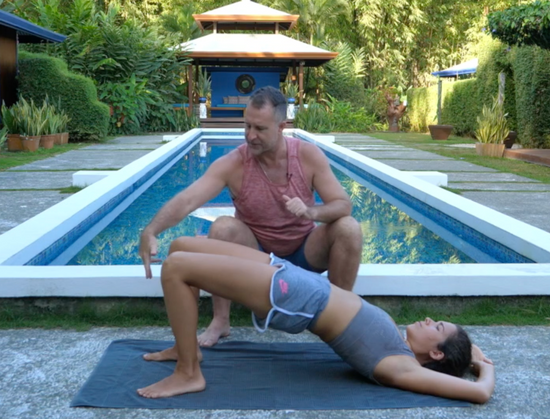Back pain is a staggeringly common health issue.
Although wellness is a rapidly growing industry, many of us still take our spinal health for granted.
Hours spent sitting at desks, hunched over computers, and slumped in front of Netflix are likely contributors to the problem. But back pain can also be caused by unexpected injuries and heavy lifting.
According to the National Institutes of Health, about 80% of adults will experience back pain at some point in their lives.
Luckily, it’s not all bad news.
Yoga therapy and regular yoga can help strengthen and stretch the back and abdominal muscles. For anyone experiencing mild to moderate back pain, practicing yoga can be a great way to reduce pain, improve posture, and enhance flexibility.
Why Spinal Health Is So Important
Spinal health is crucial to our overall wellbeing. The spine supports the entire body, allowing us to sleep, walk upright, and move in various ways. Every movement stems from the spine. So when spinal issues arise, even the simplest activities can become difficult. You might find yourself struggling to pick things up, turn your head, or even walk.
Anatomy of the Spine
In order to understand the importance of spinal health, developing a basic knowledge of its anatomy can be helpful. The spine is made up of 33 bones, known as vertebrae. These bones are divided into four major sections, known as the cervical, thoracic, lumbar, and sacrum. Each of these regions has its own function, allowing us to walk and move with ease.
Taking Care of Your Spine
Whether you’re already suffering from an achy back or want to prevent it, it’s time to give yoga a try. Research shows that the ancient practice of yoga can reduce the need for pain medication, and in some instances, be more effective.
The American College of Physicians released clinical guidelines for the noninvasive treatment of lower back pain. The guidelines suggest that instead of prescribing medication for chronic lower back pain, doctors should first recommend gentle exercises like yoga, tai chi, and motor control exercise.
(If you like the video, click here for more information.)
Yoga Poses for Bad Backs
It’s important to note that many yoga classes will not be suitable for people experiencing severe back pain. Consult your doctor or physiotherapist to establish the safest treatment options.
But if you are looking to cure occasional pain and prevent future aches, the following five poses are particularly effective in achieving good spinal health.
1. Cat-Cow (Marjaryasana/Bitilasana)
Begin in tabletop position, maintaining 90-degree angles at the knees, hips, and shoulders. Inhale and drop your belly towards the floor, while looking up. Next, exhale while rounding your spine and pushing into the floor with your hands and the tops of your feet. Although it looks easy, Cat-Cow helps to massage and stretch the spine.
2. Quadra Ped
(no known sanskrit name )
One of the most under used muscles that is critical for the health of the back is called the multifidus.
Quadra Ped is one of the ONLY yoga poses offered that accesses this muscle and stuff strengthens it.
While this pose is often taught in many yoga closes, it is given more as an elongation pose or a pose to strengthen stabilizer muscles. But we really need to bring an element of extension into it.
The extension aspect is accomplished by raising the straight arm and leg as high as you can.
Do it for yourself and feel your multifidus working!
3. Locust Pose (Salabhasana)
Building core strength is essential for spinal health. Locust Pose is an effective way to strengthen both the back and abdominal muscles.
Start by lying on your stomach with your arms by your sides, palms facing up, and forehead resting on the floor.
Next, slowly raise your head, torso, arms, and legs away from the floor.
Make sure to keep your big toes together. Focus on lengthening your body while keeping your gaze fixed ahead of you.
4. Downward Dog Pose (Adho Mukha Svanasana)
Downward Dog is one of the most frequently practiced yoga poses. A full-body stretch, it’s well worth regularly practicing for spinal health.
Start on your hands and knees. Next, tuck your toes under and raise your hips. Your fingers should be spread, index fingers and thumbs pressing into the floor.
Keep your knees bent at first, before gradually pushing the tops of your thighs back and stretching your heels down towards the floor.
Keep your head in line with your upper arms and hold for 5-7 breaths.
5. Bridge Pose (Setu Bandasana)
One of the muscles that never gets worked enough is the glutes.
The gluteus maximus muscle is located in the buttocks and is one of the strongest (and most important) muscles in the human body. It connects to the coccyx, or tailbone, as well as other surrounding bones. The gluteus maximus muscle is responsible for the movement of the hips and thighs.
Lower back pain is hardly EVER a result of lower back issues. The ISSUES are coming from somewhere else. Many people mistakenly believe that lower-back pain is caused by a problem with their lower back.
All movements of the spine require other parts of the body to work as well.
When bending forward to pick a weight up from the ground, for example, the ankles, knees, and hips should also bend to help lower the torso. Similarly, as the spine moves from side to side during walking, the legs and hips should also move from side to side (i.e., adduct and abduct) to help provide a good base of support for the spine as it moves.
The gluteal muscles play a key role in helping to take the stress off the spine during movements. (A shock absorber.)
For example, much of the rotational movement stress experienced by the spine during sporting activities is moderated by the gluteus maximus muscle.
When the spine rotates over the leg on one side of the body (e.g., when taking a backswing or follow-through in golf, tennis, or baseball), the hip and leg should also rotate to take the stress off the lower back.
The gluteus maximus muscle attaches to the structures of the spine and pelvis and to the leg. If the gluteus maximus muscle is not working properly, stress from rotational movements is instead transferred to the lumbar spine and may manifest as pain in the lower back.
To Practice Bridge Pose
1. Lift the hips up for 6 seconds and squeeze your glutes (count one one thousand, two one thousand, three one thousand… all the way to 6) and then bring the hips back down. Repeat a total of SIX times.
Option 2
2. Lift the hips up as high as you can while squeezing the glutes for 2 seconds, and then lower them back down. Repeat 25 times. Do this every day!!!!!
After doing this exercise every day for one week, you will notice your back problems will have left or had drastically decreased.
Taking care of your back is crucial if you want to maintain overall health. And regular yoga practice is one of the most effective ways to do so.
Strength-building, stress-reduction, and improved posture are just a few of the benefits you’re likely to experience along the way.
About the author:
Yogi Aaron is the Yoga Director and Teacher for the Blue Osa Yoga Teacher Trainings.
Yogi Aaron is also the creator of Applied Yoga Anatomy which implements muscle activation techniques.
Pin It For Later!
